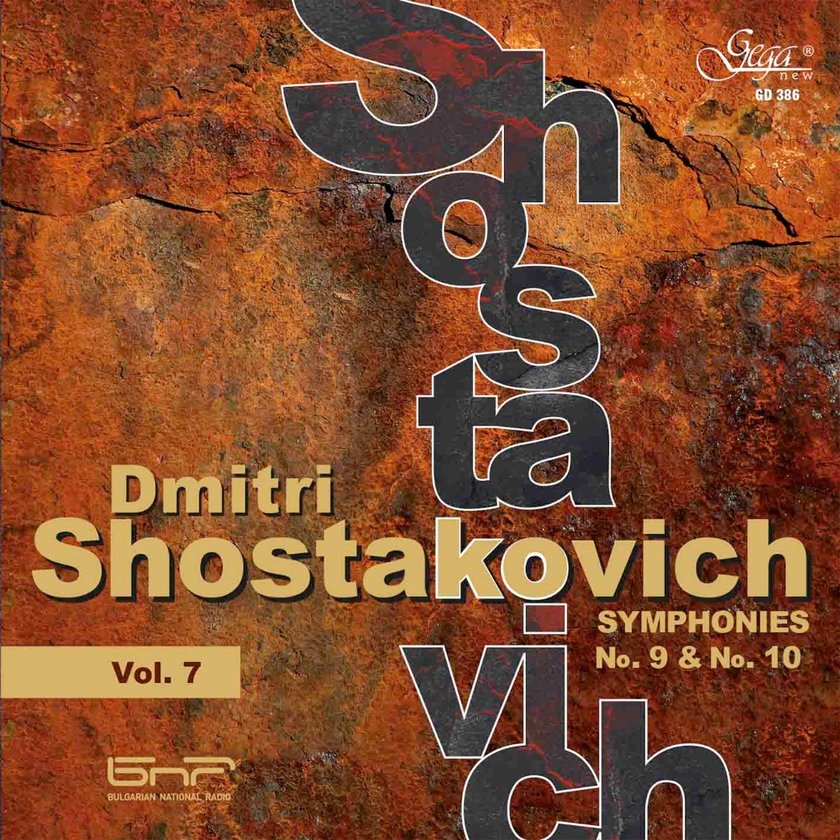- artist:Bulgarian National Radio Symphony Orchestra, Emil Tabakov (conductor)
- style(s):Classical Music
- country:Bulgaria
- formats:CD (Compact Disc)
- record posted by:Gega New Ltd.
- label:Gega New
- publisher:Gega New
- buy this record
Links
The seventh album contains two more symphonies – No. 9 and No. 10. They both have an interesting story, just as the others.
In 1943, the authorities asked Shostakovich to write a work that would pay tribute to the Soviet Union and the future victory. The composer agreed and announced that he would write a big symphony with a choir, like Beethoven’s Ninth Symphony. When the war ended in 1945, everyone was expecting the symphony, but it was not ready, even the first part was not completed. Instead of a grandiose apotheosis of victory and Stalin, on 3 November 1945, at the opening of the 25th season of the Leningrad Philharmonic Orchestra with Yevgeny Mravinsky, a chamber symphony was performed, which the composer described as “a sigh of relief after dark and tough times, with a hope for the future”. Unlike the originally conceived score of a spectacular, solemn work that was not composed in the planned two years, this short, less spectacular and lustrous work was written in a month! The symphony was subject to all kinds of criticism not only in the Soviet Union but also beyond its borders, including the United States. In 1948, it was excluded from the repertoire of the symphony orchestras. Shostakovich’s works were rebuked (once again) as being formalistic and harmful, and the composer was fired from the Moscow Conservatory. Up to 1953 he supported himself by writing mainly film music, “Soviet” works, songs, works for children, chamber works.
Stalin’s death brought him back to active creative work and on 17 December 1953, the premiere of the 10th Symphony, Op. 93 took place again with the Leningrad Philharmonic Orchestra and Yevgeny Mravinsky. It is not clear exactly when it was created: according to the composer’s letters - between July and October 1953; according to pianist Tatiana Nikolaeva, it was written in 1951, and excerpts from Shostakovich’s archive materials mention the year 1946. But the disputes of the year of creation do not change the fact that the symphony is one of his most dramatic and philosophical works. The good and the evil, the meaning of human existence, the struggle and its outcome are the main ideas in the work. For the first time in his symphonies, we see the appearance of the theme-autograph – the musical monogram D-Es-C-H based on the initials of D. Sch. as per the German transcription. In the third movement, we can hear yet another new theme (E-A-E-D-A), which encrypts the name of Elmira Nazirova, a pianist and composer, a student of Shostakovich. All this defines the 10th Symphony as one of Dmitry Shostakovich’s most personal and autobiographical works.



